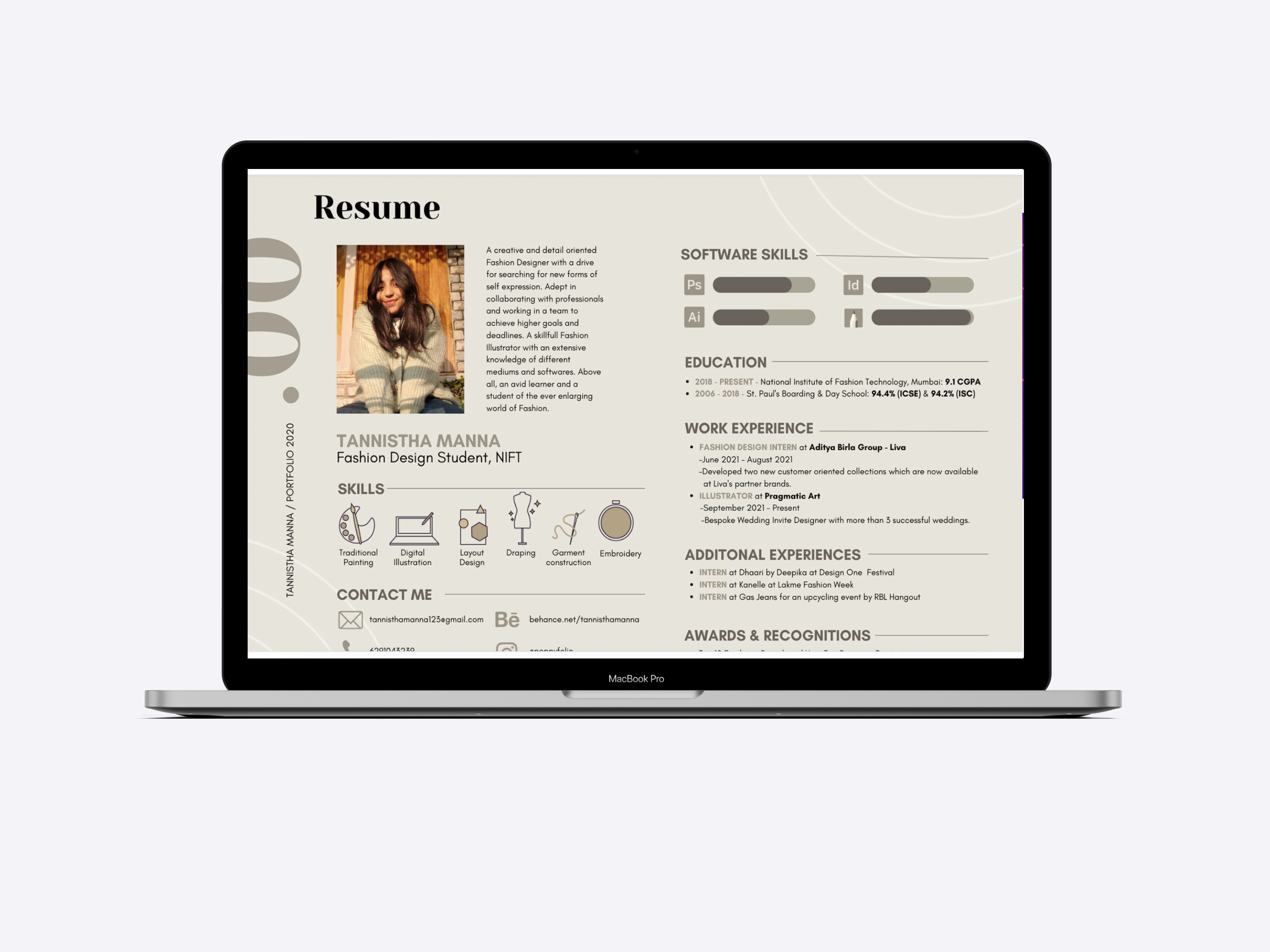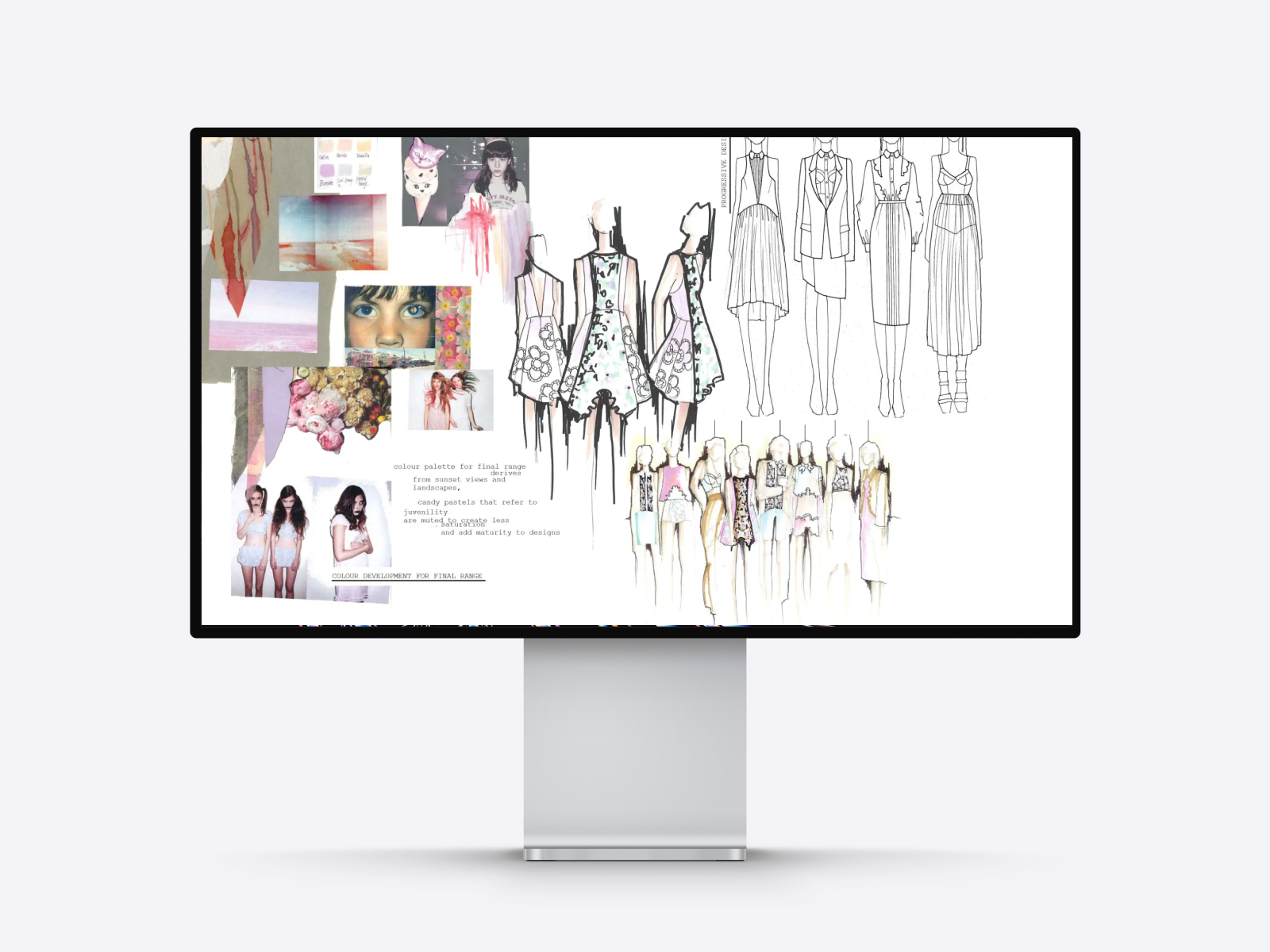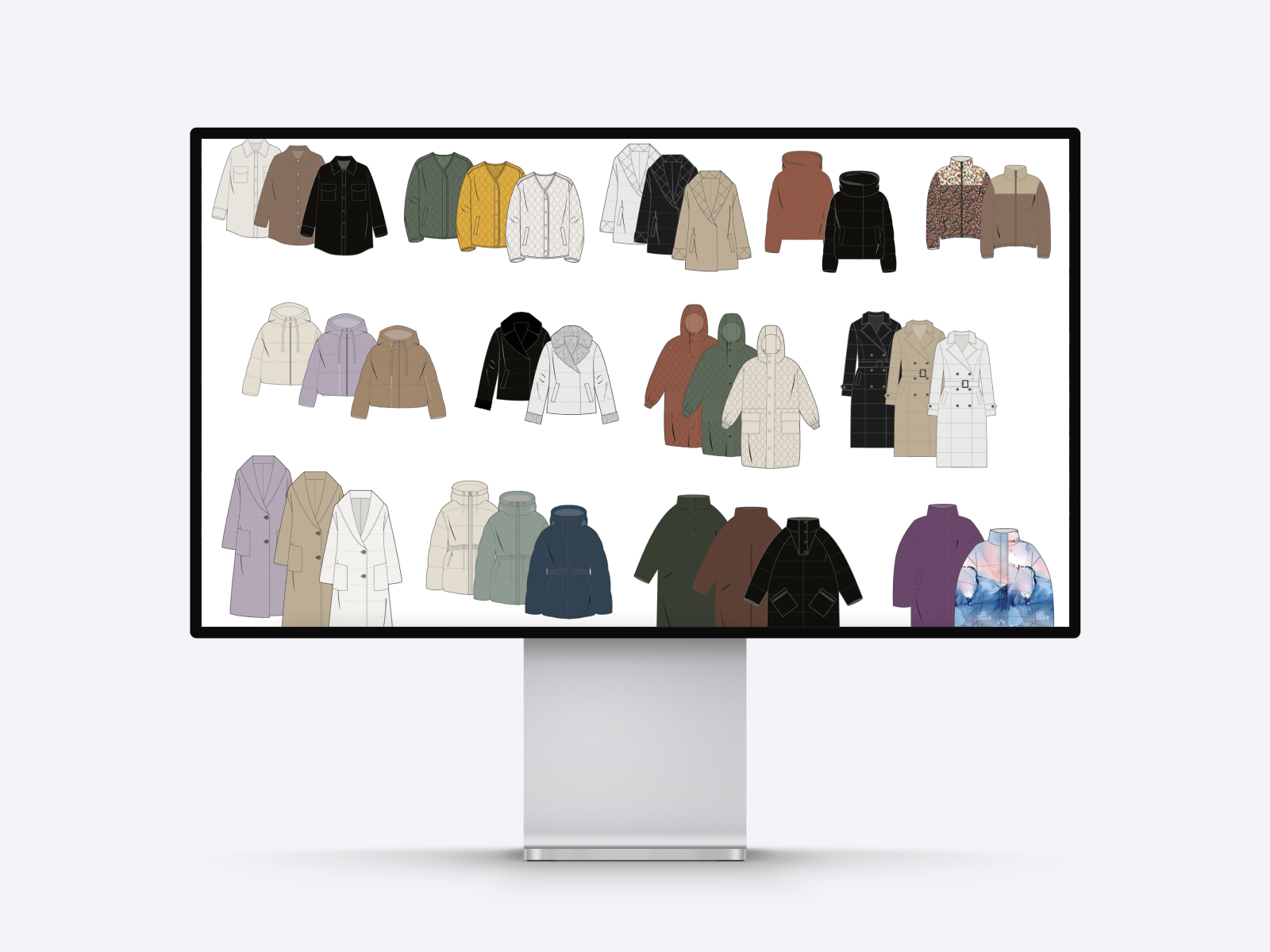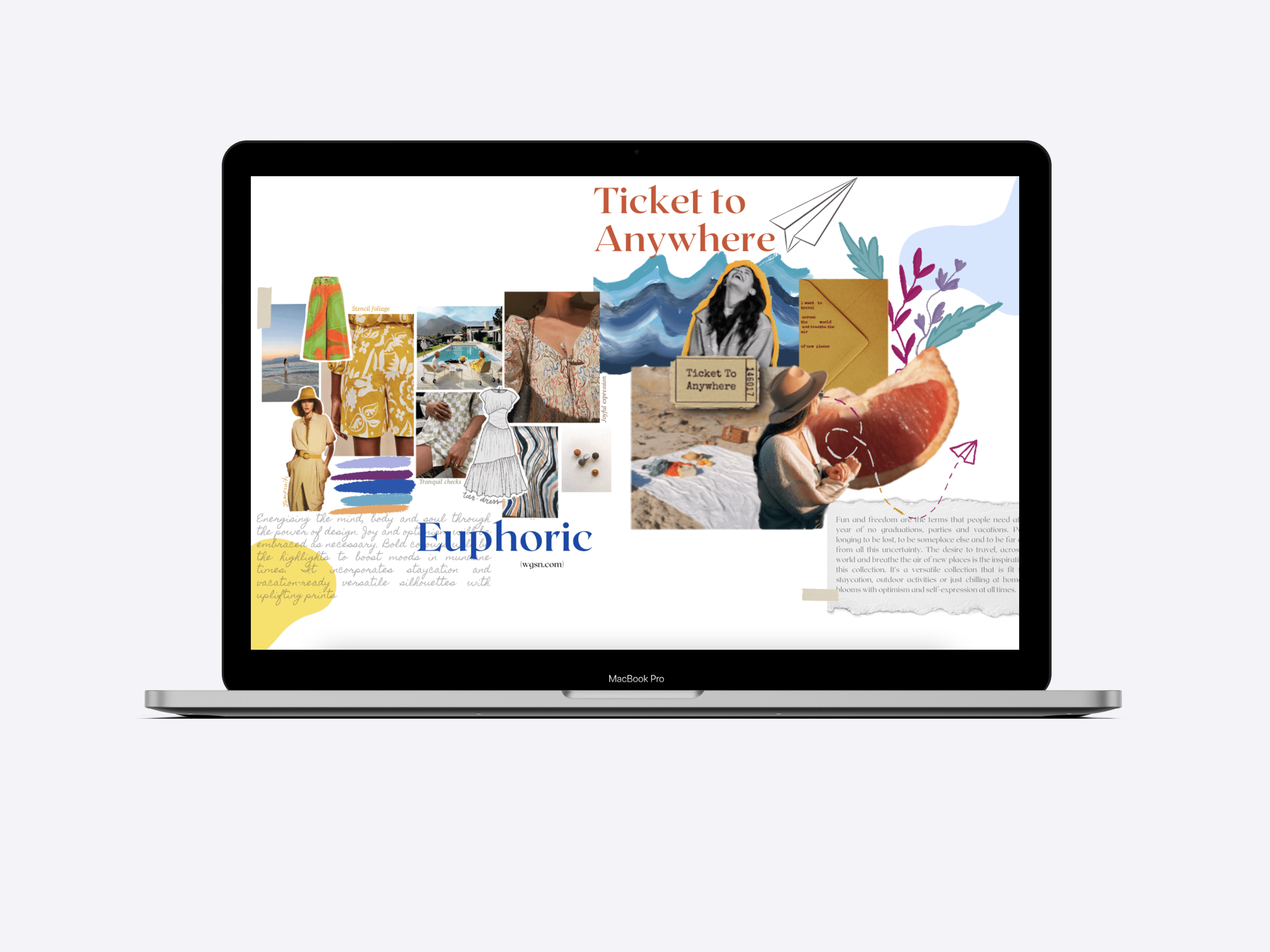How To Create a Winning Fashion Portfolio Online & What To Include in It
Learn how to create a winning fashion portfolio. Our step-by-step guide is here to help you!
In this post, you will learn how to create an outstanding fashion portfolio, what you have to include in it, and why it is worth choosing a portfolio website builder for your fashion portfolio. Ready for the challenge?
Until you take to the catwalks of fashion week, you have to find a way to present your work virtually. This is one of the reasons you need a fashion portfolio.

What is a fashion portfolio?
A fashion design portfolio is a collection of illustrations, samples, fabrics, and photos put together. It shows your work in its entirety for your future employer, collaborator, or investor.
In most professions (especially if you work as a freelancer or apply for a job), it is important to showcase your past work and experience. A portfolio—especially a well-crafted portfolio—can win you a dream job and create more opportunities.
Types of fashion portfolios
Before the digital age, fashion designers, architects and photographers created physical portfolios. Now there are a number of ways to get started with your portfolio, which demonstrates your creativity and individuality.
1. Fashion portfolio book
The traditional, physical portfolio is quite similar to a lookbook. You have a front page, and inside it’s a collection of your best works: photos, sketches, illustrations and full designs.
As it is physical it comes with its own difficulties: hard to change and update it with your most recent work, not to mention it’s pretty expensive to print it in high quality.
2. Fashion portfolio website
There are two main ways to build an online portfolio. You can either choose a website builder, such as WordPress or Wix, or you can go with a dedicated portfolio website builder.
A portfolio website builder can save you time and effort, so rather than building a website from scratch, or learning to code, you can focus on your work. We are currently working on a portfolio website builder for fashion designers!
Have a specific feature in mind? Dreaming about a portfolio website tailored to your needs? Subscribe to our newsletter or drop us an e-mail, we are happy to chat!

Source: Pinterest
Why choose a fashion portfolio website builder?
Building an online presence or a brand can be the key to success in the world of fashion. A strong online presence is not only helping you to persuade a hiring manager that you are the right person for the job, but it can bring you potential collaborators, investors or photographers. A portfolio website builder can help you with all the above, and a lot more than that:
- All your projects are in place. Raise your hand if your projects are scattered on different social media platforms. Having it all in place helps you to organize your work.
- It’s not only a portfolio website. It works like a traditional website, and you can use it for several other purposes too: you can list your services, and even start a blog to share some behind-the-scenes details or examples from your work!
- Build your online presence. Your fashion portfolio website works as an online business card for your future employers and potential clients. It can greatly increase your visibility.
- Give a great first impression. Hiring managers and recruiters usually don’t spend more than 2-3 minutes with a resume, or portfolio. Giving a strong first impression is vital. That’s why you need to give a good deal of thought to how to build your fashion portfolio.
How to build your fashion portfolio
Consider why you need a fashion portfolio website, and what is your main goal.

Before you dive in
Yes, it's essential to do a bit of research before you create your website. There are different types of portfolios you can create ( e.g. student portfolio, professional portfolio, personal portfolio ) so you have to decide which one to go for. But before you do that, consider two important questions: what to include in your portfolio, and what skills do you want to highlight?

What to include in your fashion portfolio?
Your portfolio it is about you: it should reflect your taste and your work. Whether you are building an offline or an online portfolio, it's essential to take those steps.
Once you gather everything, you can start to select. It's pretty much being Marie Kondo. Collecting everything that sparks joy, and leaving the rest behind!
Choose 3 - 5 from your best works. You don’t need to overload your portfolio, no one really has time to review an extensive portfolio, and they are interested in your final collection and design process.
Build your digital fashion portfolio in 10 easy steps
In this section, our main goal is to show you that you can easily put together a fashion portfolio website, without knowing how to code, or any further knowledge. This is your step-by-step guide, on how to build a fashion portfolio website.
1. Choose your template
Our portfolio website builder tool offers you a number of possibilities when it comes to templates. A great template is the key element of your portfolio. You can change it any time you wish, or personalize it to fit your taste.
2. Add your best projects…
Add the key projects that you have collected beforehand. First, choose a hero image to best represent your work and then name your project. Make sure the name speaks for itself, and you can refer to it later.

Example of fashion sketches - Source: Pinterest
3… and high-quality pictures!
Pictures are a crucial part of such a visual field like fashion design. Presenting your collection in the best way you can is necessary, so they will be able to judge your work. Double-check your photos: if you aren't happy with them, hire a professional photographer.
4. Give some background information on the project
Sometimes it can be tough to write about a project in great detail. With our tool, we guide you through the entire process. Start with the background info, then the entire creative process, and finish with the ultimate results.
It's ideal to show your entire design process and work examples, not only the finished product or collection. This shows your future employer or collaborator how you put things together, and what is the process behind your work.
5. Put your screenshots and designs into mockups
At the end of each project, you can use your screenshots and put them into mockups, for showcasing it in a modern and sophisticated way.
6. Fashion sketches
There is no doubt that fashion sketches and traditional drawings are an essential part of your portfolio. With our sketching tool, you can bring your drawing alive! Our tool allows you to get lost in the flow and includes all your artwork in the fashion portfolio website. Doing it all in one place; it doesn't get better than this! Learn more about illustrator portfolios here.

7. Mood boards
Every fashion designer knows that mood boards are the perfect way to show how you get inspired, and what you do with that inspiration. Mood boards are part of the ideation and research process. Include it on your project page, similar to a gallery.
8. Home page
Now that you have finished your project page, it’s time to tidy around your home page and about page. Your home page has to be compelling because you only have 5 seconds to catch someone's attention. Make sure that your homepage is clear, there is no fluff in it, and it is easy to get around.
Things to include on your home page:
- Your name
- A short bio
- Your services
- Social media accounts
- Logos
9. About page
If introducing yourself feels like a chore, don’t panic. We are here to help! With our short guide on how to create the perfect about me page, you can write an introduction that'll leave a lasting impression.
10. Get in touch
Keep it simple: an e-mail address, a phone number, and your social media accounts are more than enough. Also, don't forget to include where are you currently located and if you're open to remote work.
The essential part of a digital fashion portfolio: how to present mood boards and sketches
Mood boards are a collection of images, texts, fabrics and objects regarding a certain project. Presenting a mood board is vital if we are talking about a portfolio because they are the perfect way to show how you get inspired, and what you do with that inspiration.
What should a mood board look like?
Shortly: however you wish it to look like. The aim of the mood board is to give a clear concept of your ideas to your viewer. Consistency is the key. With our portfolio website builder tool, you can shape your mood board to your liking, and include all the necessary elements in it.

As you start to collect your pieces, it can be intimidating to decide whether you want an item on the board. The goal of the mood board is to inspire and get inspired, so first, collect all things you have been called to, and from there you can start the sorting. Start the collection process with an open mind. Do not limit yourself.
What is fashion sketching?
Unlike fashion illustrations, sketching doesn't include feet, hands or faces, they usually only show silhouettes. Fashion illustration is a lot more detailed. It includes colors, detailed faces, and even hairstyles.
How to present fashion sketching in your portfolio
Fashion sketching can give you a massive headache if you are not well prepared for it. Luckily, with our fashion sketching tool, you can save valuable hours. Our fashion sketching tool can save you hours of work because it allows you to quickly sketch whatever is in your mind and then put it straight into your portfolio.

5 + 1 tips for your fashion portfolio website
We have collected some insider tips and key elements on what makes a fashion portfolio website exceptional. Let’s see how you can stand out from the crowd!
1. Think about your purpose
What is your main goal with your portfolio? Do you want to apply for college or a scholarship/internship? Do you want to land your dream job in the fashion industry? Are you a freelancer looking for new projects to work on? Before starting to work on your portfolio, narrow down your main goals with it, so you can clearly see where are you heading with it.
2. Do your research
Whatever your primary goal is, you won’t be getting away without doing a little bit of research. Browse different websites, and write down your key takeaways. What do you like about them? What would you do differently?
3. Use high-quality pictures and visible fonts
A portfolio website allows you to display high-quality images. A good template can help you choose fonts that best fit your creative vision. Make sure it is consistent with the template and is readable for the viewer.
4. Watch out for typos
There is nothing more disheartening than making grammar mistakes in your portfolio. You can always use tools like Outwrite or Grammarly to double-check your copy before you publish it.
5. Share it with your friends and close acquaintances….
It's always helpful to get someone to review your website even if they are outside of your profession because they might have important insights to provide. They can point out errors or things to improve, which can be pretty useful.
+1. … and the world!
There are plenty of opportunities to share your work. If you use social media platforms (e.g. you have a dedicated Facebook/Instagram page for your work) you can include it in your bio.
LinkedIn is an ideal platform for professional connections and sharing industry-related news. Why not share your talent, and your professional fashion portfolio too? Ask for feedback and shares, maybe it will reach the relevant audience!
Looking for the perfect portfolio website builder for fashion designers? Stay tuned!
We hope by the end of this article you gained some extra knowledge on fashion portfolios. Don't forget to take your time, experiment, and think about it as a pleasant journey where you get to know yourself (and your work) a little bit more. Our goal is to make your life easier and build an extraordinary tool for fashion designers.

We are currently working on a portfolio website builder for fashion designers, so if you want to hit your fashion design dreams faster and get early access, stay tuned! Dreaming about an extra feature you want us to add? Drop us an e-mail, we can’t wait to chat!
